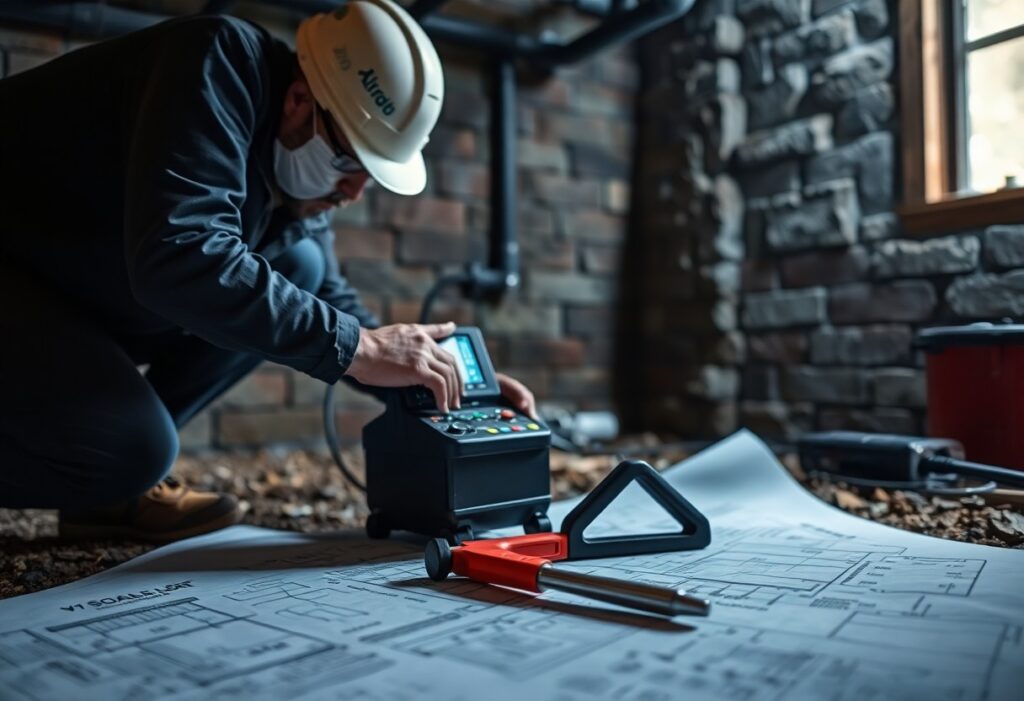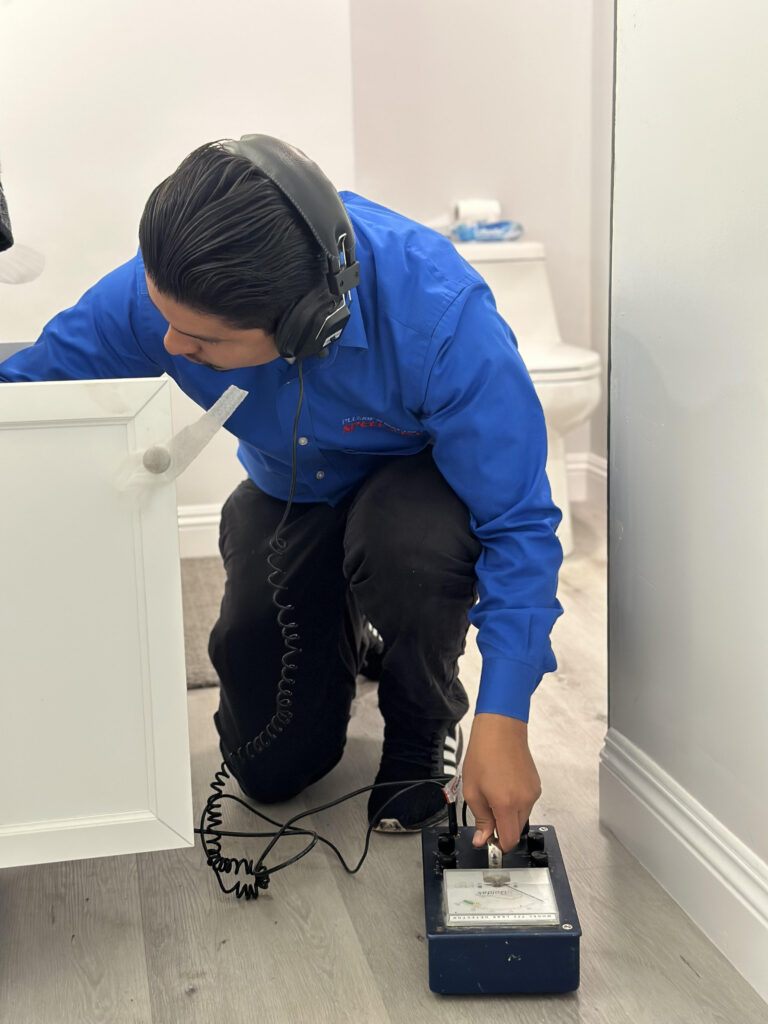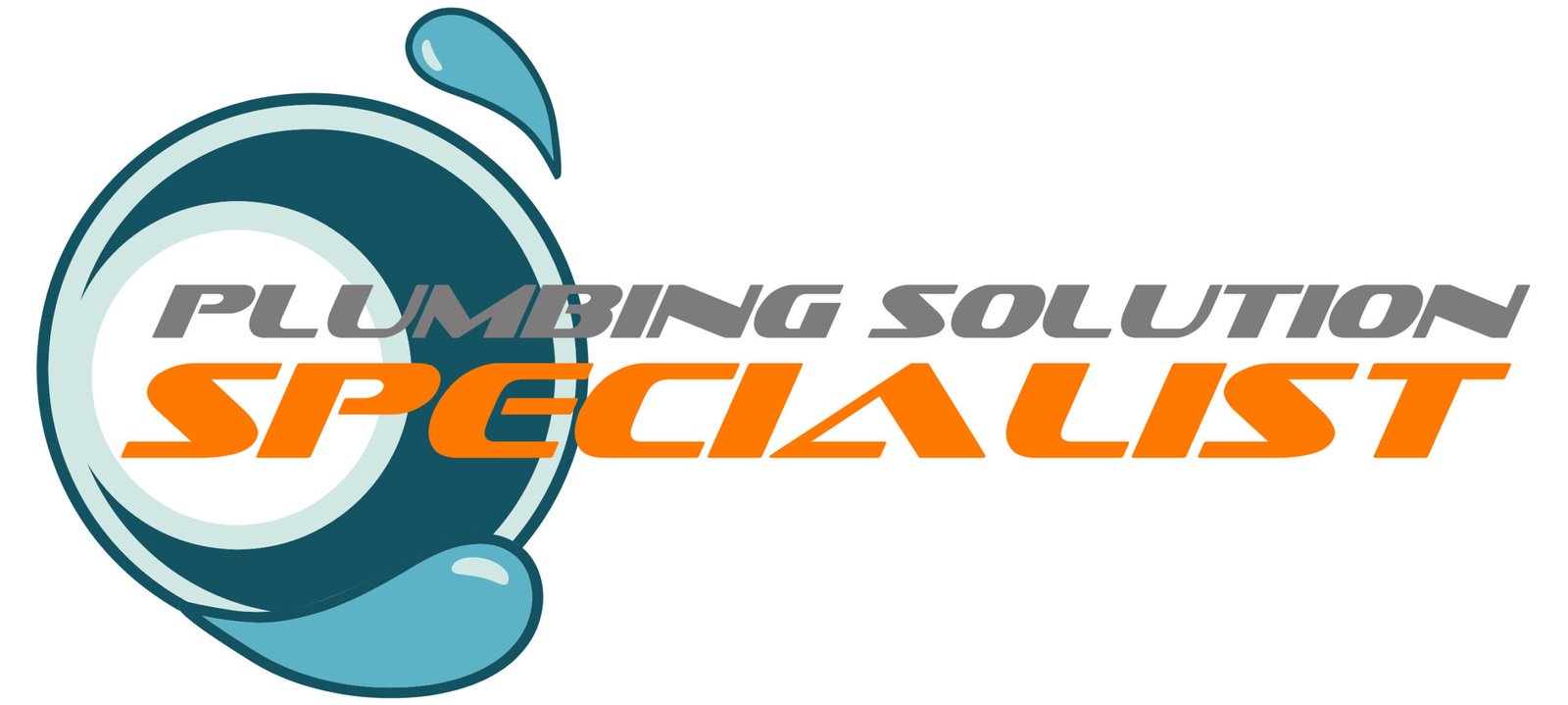Slab Leak Detection: Protecting Yorba Linda’s Homes

As a homeowner in Yorba Linda, you take pride in your property and want to ensure it remains safe and secure. But did you know that hidden water leaks beneath your concrete slab foundation can cause significant damage, leading to costly repairs and even foundation collapse? Don’t wait until it’s too late! Early detection is key to preventing devastating consequences. In this guide, we’ll walk you through the importance of slab leak detection, signs to look out for, and how to protect your home from these silent threats. Call Plumbing Solution Specialist for a Free Quote at (888) 973-5422 to schedule a comprehensive plumbing leak inspection today! Key Takeaways: Early detection is key to preventing costly damage to your home’s foundation and saving you money on your water bill. Here are the main points to consider: Water Leak Detection expertise is crucial to identify hidden leaks under your home’s slab foundation. Professional plumbers use advanced technology, such as thermal imaging and acoustic sensors, to pinpoint the source of the leak. A prompt Underground Pipe Leak Repair is vital to prevent further damage to your home’s foundation, walls, and floors. The longer you wait, the more extensive and expensive the repairs will be. A comprehensive Plumbing Leak Inspection can help identify potential issues before they become major problems. Regular inspections can save you money and give you peace of mind knowing your home is protected from hidden leaks. Don’t wait until it’s too late! Call Plumbing Solution Specialist for a Free Quote at (888) 973-5422 to schedule your slab leak detection and repair service. Our team of experts provides top-notch Foundation Leak Solutions, Concrete Slab Water Leak Fix, and Home Leak Detection Services. We also specialize in Burst Pipe Repair Under Slab and Slab Foundation Leak Testing. Learn more about our Water Leak Detection services and how we can help you protect your home from slab leaks. Types of Slab Leaks Affecting Yorba Linda Homes Your home is susceptible to various types of slab leaks, each with its unique characteristics and consequences. Understanding these types is imperative to effective detection and repair. Leak Type Description Water Line Leaks Leaks in the water supply lines under your home’s slab foundation Sewer Line Leaks Leaks in the sewer lines under your home’s slab foundation Drain Leaks Leaks in the drain lines under your home’s slab foundation Hydrostatic Pressure Leaks Leaks caused by water pressure buildup under your home’s slab foundation Knowing the types of slab leaks that can affect your Yorba Linda home is vital to taking proactive measures to prevent them. Water Line Leaks Any signs of water damage or low water pressure may indicate a water line leak under your home’s slab foundation. These leaks can cause significant damage to your home’s structure and lead to costly repairs if left unchecked. Sewer Line Leaks The smell of sewage or backups in your drains may signal a sewer line leak under your home’s slab foundation. These leaks can pose serious health risks and require immediate attention. Leaks in your sewer lines can cause sewage to seep into your home, contaminating your water supply and putting your family’s health at risk. Don’t wait until it’s too late; contact a professional plumber to inspect and repair your sewer lines before the situation worsens. Call Plumbing Solution Specialist for a Free Quote at (888) 973-5422 to detect and repair slab leaks in your Yorba Linda home. Our experts specialize in Water Leak Detection, Underground Pipe Leak Repair, and Plumbing Leak Inspection to provide you with effective Foundation Leak Solutions. Don’t let slab leaks damage your home; learn more about our Concrete Slab Water Leak Fix, Home Leak Detection Services, and Burst Pipe Repair Under Slab solutions. Factors Contributing to Slab Leaks Any homeowner in Yorba Linda should be aware of the potential factors that can contribute to slab leaks. These include: Soil Conditions: The type of soil your home is built on can affect the likelihood of a slab leak. Aging Infrastructure: Older homes are more prone to slab leaks due to worn-out pipes. Water Pressure: High water pressure can cause pipes to burst or leak. Perceiving these factors can help you take proactive measures to prevent slab leaks and protect your home. Soil Conditions To understand the role of soil conditions in slab leaks, it’s crucial to recognize that certain types of soil can be more corrosive or expansive, causing pipes to shift and leak. Aging Infrastructure On average, homes in Yorba Linda are over 40 years old, making them more susceptible to slab leaks due to aging pipes. Soil settlement and shifting can cause underground pipes to crack and leak, leading to costly repairs and damage to your home’s foundation. As a homeowner, it’s crucial to be aware of the signs of aging infrastructure, such as low water pressure, rusty water, or unexplained increases in your water bill. If you suspect a slab leak in your Yorba Linda home, don’t hesitate to Call Plumbing Solution Specialist for a Free Quote at (888) 973-5422. Tips for Early Slab Leak Detection Keep a close eye on your home’s plumbing system to catch slab leaks before they cause significant damage. Look out for signs such as unexplained increases in water bills, cracks in walls and floors, and hot spots on the floor. You can also schedule regular plumbing leak inspections to identify potential issues before they become major problems. Unexplained Water Bills Lingering water bills can be a subtle sign of a slab leak. If you notice your water bills are higher than usual without any apparent reason, it may indicate a hidden leak beneath your home’s foundation. Cracks in Walls and Floors Walls and floors that suddenly develop cracks can be a warning sign of a slab leak. As water seeps beneath the foundation, it can cause the soil to shift, leading to cracks in the walls and floors. Slab leaks can cause the soil beneath your home’s foundation to shift, leading to cracks
24/7 Emergency Plumbing: Peace of Mind for Yorba Linda Homeowners

As a homeowner in Yorba Linda, you can’t afford to wait when a plumbing emergency strikes. A burst pipe or overflowing toilet can cause thousands of dollars in damage and disrupt your daily life. That’s why having access to 24/7 emergency plumbing services is vital. With a reliable on-call plumbing professional just a phone call away, you can rest assured that help will arrive quickly to fix the issue and prevent further damage. For fast plumbing assistance and urgent pipe leak repair, trust Plumbing Solution Specialist. Call us now for a free quote at (888) 973-5422 and experience the peace of mind that comes with knowing you’re prepared for any plumbing emergency. Learn more about our emergency plumbing repair services and how we can help you in your time of need. Key Takeaways: 24/7 Emergency Plumbing provides Yorba Linda homeowners with peace of mind, knowing that they have access to fast plumbing assistance whenever they need it, day or night. This means that homeowners can rest easy, knowing that a plumbing emergency won’t disrupt their daily lives. With 24-hour plumbing service, homeowners can get urgent pipe leak repair and emergency water heater repair when they need it most. This prompt attention can help prevent further damage to their homes and save them money on costly repairs down the line. By having an on-call plumbing professional just a phone call away, Yorba Linda homeowners can avoid the stress and hassle of dealing with a plumbing emergency on their own. Instead, they can rely on a trusted expert to provide emergency plumbing repair and get their lives back to normal as quickly as possible. Don’t wait until a plumbing emergency strikes! Call Plumbing Solution Specialist for a Free Quote today at (888) 973-5422 and experience the peace of mind that comes with knowing you have a trusted partner for all your emergency plumbing needs. Types of 24/7 Emergency Plumbing Services To ensure your home remains safe and functional, it’s important to have access to a range of 24/7 emergency plumbing services. These services include: Water Heater Repair and Replacement Drain Cleaning and Unclogging Pipe Repair and Replacement Urgent Pipe Leak Repair Emergency Water Heater Repair Assume that you have a plumbing emergency, and you need fast plumbing assistance. With a 24/7 emergency plumbing service, you can rest assured that a professional will arrive at your doorstep promptly to resolve the issue. Service Description Water Heater Repair and Replacement Expert repair and replacement of water heaters to ensure hot water supply Drain Cleaning and Unclogging Effective cleaning and unclogging of drains to prevent backups and flooding Pipe Repair and Replacement Quick repair and replacement of pipes to prevent water damage and leaks Urgent Pipe Leak Repair Immediate repair of pipe leaks to prevent water damage and mold growth Water Heater Repair and Replacement One of the most common plumbing emergencies is a malfunctioning water heater. A 24/7 emergency plumbing service can repair or replace your water heater to ensure you have a steady supply of hot water. Drain Cleaning and Unclogging With clogged drains, you risk facing messy backups and flooding. A 24/7 emergency plumbing service can quickly clean and unclog your drains to prevent these issues. For instance, a professional plumber can use advanced equipment like hydro-jetters to clear stubborn clogs and restore your drain’s functionality. Pipe Repair and Replacement To prevent water damage and leaks, it’s important to address pipe issues promptly. A 24/7 emergency plumbing service can repair or replace your pipes to ensure your home remains safe and secure. Another benefit of prompt pipe repair and replacement is that it can help prevent mold growth and structural damage to your home. If you’re facing a plumbing emergency, don’t hesitate to call Plumbing Solution Specialist for fast plumbing assistance. Our team of on-call plumbing professionals is available 24/7 to provide urgent pipe leak repair, emergency water heater repair, and other emergency plumbing repair services. Call us now for a free quote at (888) 973-5422 or visit our website to learn more about our emergency plumbing repair services. Tips for Choosing the Right 24/7 Emergency Plumber You want to ensure that you’re hiring a reliable and trustworthy 24/7 emergency plumber to handle your plumbing emergency. Here are some tips to consider: Licenses and certifications: Make sure the plumber is properly licensed and certified. Online reviews and ratings: Check online reviews from multiple sources to get an idea of the plumber’s reputation. Response time and availability: Ask about their response time and availability, especially during late-night or weekend emergencies. Any reputable plumber will be happy to provide you with this information. If you’re in need of an Emergency Plumbing Service in Yorba Linda, CA, make sure to do your research beforehand. Check Licenses and Certifications Assuming you’ve shortlisted a few plumbers, it’s imperative to verify their licenses and certifications. A licensed plumber has undergone the necessary training and has the expertise to handle complex plumbing issues. Always ask to see their licenses and certifications before hiring them. Read Online Reviews and Ratings You can get a sense of a plumber’s reputation by reading online reviews from multiple sources such as Yelp, Google, and Facebook. Look for reviews that mention their emergency plumbing services, response time, and overall customer satisfaction. The quality of online reviews can give you an idea of the plumber’s reliability, professionalism, and work quality. Be wary of fake reviews, and look for reviews that provide specific details about the service they received. Ask About Response Time and Availability Licenses and certifications are imperative, but so is the plumber’s response time and availability. You want to ensure that they can respond quickly to your emergency, especially during late-night or weekend emergencies. Tips like these can help you find a reliable 24/7 emergency plumber who can provide fast plumbing assistance when you need it most. Don’t hesitate to ask about their response time, and make sure they have an on-call plumbing professional available 24/7. Call Plumbing Solution Specialist for a
How To Compare Repiping Costs Among Top Plumbing Companies In Yorba Linda

Many homeowners in Yorba Linda face the daunting task of repiping their homes, and understanding the costs involved can be overwhelming. To ensure you make an informed decision, it’s critical to compare quotes and services from the top plumbing companies in Yorba Linda. In this guide, you will learn vital tips and strategies to effectively evaluate repiping costs, helping you choose the best option for your home and budget. Arm yourself with the knowledge you need to navigate the complexities of plumbing services and secure the best deal for your repiping project. Key Takeaways: Request Detailed Estimates: Always ask for itemized quotes from each plumbing company to understand their pricing structure and what services are included. Evaluate Company Reputation: Research the plumbing companies’ reviews and ratings to ensure you choose a reputable contractor, as quality can impact overall costs and satisfaction. Consider Warranty and Guarantees: Look for companies that offer warranties on their work, as this can save you money in the long run should any issues arise after repiping. Understanding Repiping To successfully navigate the repiping process, you first need to comprehend what repiping entails. Repiping involves replacing old or damaged plumbing pipes in your home with new materials to ensure a reliable and efficient water supply. This procedure is crucial for homes experiencing persistent plumbing issues, including leaks, low water pressure, or rust-colored water. By investing in repiping, you are vitally giving your plumbing system a fresh start, enhancing its lifespan and functionality. What is Repiping? With various types of plumbing pipes out there, it’s vital to understand that repiping is not merely a patchwork solution. Instead, it is a comprehensive approach that targets the entire plumbing system’s integrity. This method involves removing the current pipes entirely and replacing them with new ones, which might be made from materials such as copper, PEX, or PVC. The result is a plumbing system that not only works more efficiently but is also less prone to leaks and other common issues. Common Reasons for Repiping For homeowners, recognizing the signs that indicate a need for repiping is critical for maintaining your plumbing system. Common reasons for repiping include frequent leaks, outdated materials such as galvanized pipes, and deteriorating water quality. These factors can compromise your home’s plumbing and lead to larger, costlier problems down the road. By being proactive about repiping, you can save yourself from unexpected expenses and ensure a steady flow of clean, fresh water throughout your home. Understanding the factors that necessitate repiping can empower you to make informed decisions about your home’s plumbing. Many homeowners associate plumbing issues solely with minor leaks or clogs, overlooking that they could stem from aging or inadequately designed systems. Investing in repiping not only addresses these concerns but also enhances the overall safety and comfort of your living environment. Types of Repiping Materials To make educated decisions about how to repipe your home, you should familiarize yourself with the main types of materials used in repiping projects. Here’s a breakdown of some common materials: Material Description Copper Known for its durability and resistance to corrosion, copper pipes have been a standard in plumbing for decades. PVC This lightweight material is ideal for draining and venting systems and is resistant to chemical corrosion. PEX Flexible and easy to install, PEX hoses are increasingly popular for residential plumbing due to their low cost. CPVC Similar to PVC but rated for hot water, CPVC is also a common choice for plumbing systems. Galvanized Steel While durable, it tends to corrode over time and is often replaced in repiping projects. Knowing which materials are available can help you make the right choice tailored to your home’s needs. Each material has its pros and cons, so it’s vital to consider factors such as cost, lifespan, and safety when discussing options with your plumbing contractor. Copper: Durability and resist corrosion PVC: Lightweight and resistant to chemical corrosion PEX: Flexible with a low installation cost CPVC: Rated for hot water applications Galvanized Steel: Older option prone to corrosion It’s important to reflect on the material choices carefully to ensure the longevity of your plumbing system. The decision you make today could influence the reliability and safety of your water supply for years to come, so take the time to assess your options thoroughly. Material Attributes Copper Durable and anti-corrosive PVC Economical for drainage systems PEX Flexible and easy to install CPVC Good for hot water supply Galvanized Steel Older, known for corrosion issues It’s clear that understanding the various types of repiping materials can significantly impact your plumbing choices. Each option’s unique characteristics can make a big difference in your plumbing project’s overall success and efficiency. As you proceed, stay informed on these materials to ensure your repiping project is both effective and budget-friendly. Factors Influencing Repiping Costs Little do many homeowners realize just how many variables there are that can significantly influence the costs associated with repiping your home. Understanding these factors will allow you to make well-informed decisions when comparing quotes from top plumbing companies in Yorba Linda. Here are some key elements that can impact repiping costs: Size of the Home Type of Materials Used Accessibility of Pipes Age and Condition of Existing Plumbing The Size of the Home Assuming that your home is larger, you can expect higher repiping costs. The volume of plumbing required increases as the size of the home expands, meaning more materials and labor are needed. Conversely, smaller homes generally have lower repiping costs due to reduced material needs and shorter labor hours. Furthermore, the layout of your home can also play a crucial role. A sprawling single-story home may require more pipework than a compact two-story home, even if both are of similar square footage. Therefore, it’s necessary to consider not just the size, but how the plumbing routes through your space. Type of Materials Used Factors like the choice of materials can greatly impact the overall costs of repiping. If you opt for copper pipes, it will
